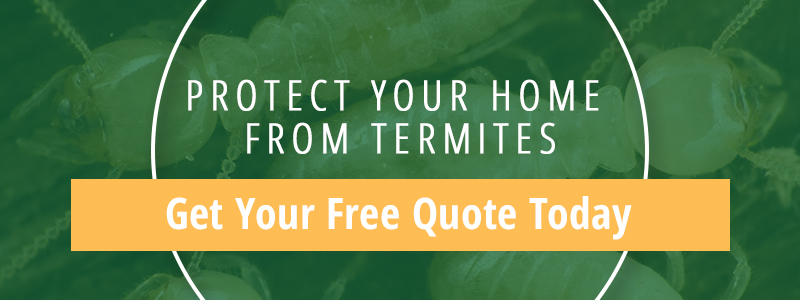Termite Reproduction: Understanding the Mating Habits of These Destructive Pests
In a previous post, we outlined for you the social behaviors of termites. In this post, we went into the basics of the caste system and how each termite plays their own integral role in ensuring that the colony is protected, fed, and continues to grow. If you keep up with our blog, you likely are familiar with the basics of termite reproduction. However, we wanted to give you a bit more information today. After all, while we work our hardest to get termites out of your home, we do find these little critters relatively fascinating. Additionally, knowing more about the mating habits of termites might just mean the difference between you calling an exterminator today or a week from now. Continue reading below to learn more about how termites reproduce and why it should matter to you as a homeowner.
The Caste System Revisited
As we mentioned, we have already slightly covered what the termite caste system looks like and which roles different termites play in it. Before you learn about how these pests reproduce, we would like to quickly revisit this so that you can get a refresher.
Termites develop so that they can be part of one of three classes. While every single termite begins its life as a larva and the develop into nymphs, where their life progresses to after that varies.
Termites either become a soldier, a worker, or a member of the reproductive class. Each of these types of termites has varied physical makeup that makes them perfect for the caste they eventually end up in. While you already know that worker termites are able to break down cellulose and soldier termites have large jaws that are used to poison other pests that threaten the nest, you may not be aware of what classifies a reproductive termite. Let’s tackle that.
Reproduction
The members of the reproductive class have the ability to mate. Plain and simple. When they become mature, these termites are capable of growing wings and functioning eyes. These aid the termites in being able to leave the colony so that they can find mates. They are also able to develop exoskeletons that are especially hard that allow them to stand up against the conditions outside of the colony.
Once they are prepared to mate, these termites will make a hole in the wall of the nest and escape. They will then begin to swarm until they locate a mate and participate in the reproduction process. After this, the wings that were previously formed will fall off. New colonies will then be formed and they will become the kings and queens of them. In the right conditions, a queen termite can live up to 10 years. This is far greater of a lifespan than the lower members of the termite caste system, as they normally will only live one or two years on average.
Shedding Wings
One of the main ways homeowners discover that they have termites in their home is to locate the wings that have been shed by the reproductive caste. Most often, these wings will be spots on windows sills or around other openings of the home, like near windows or doors on the ground. Most commonly these wings look a bit like little scales and are brown and yellow in color.
Have A Termite Problem?
If you have spotted these scale-like wings around your home and you weren’t sure what they were until just now, it’s important to call an exterminator as soon as possible. At Earthwise Pest Management, we know the damage that termites are capable of doing. Because of this, we cannot stress to you enough how imperative getting rid of them quickly is. Call us right now to schedule a termite inspection or extermination. Protect your Sacramento home from termites starting today!

